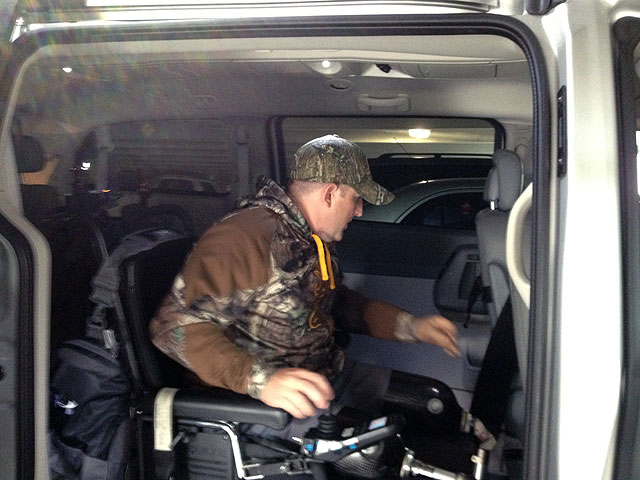
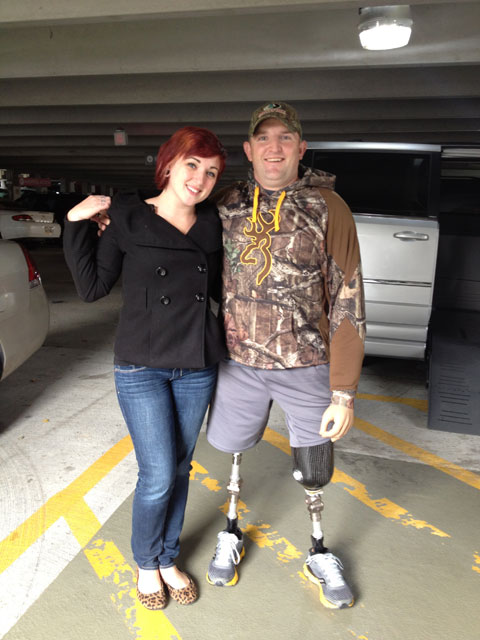
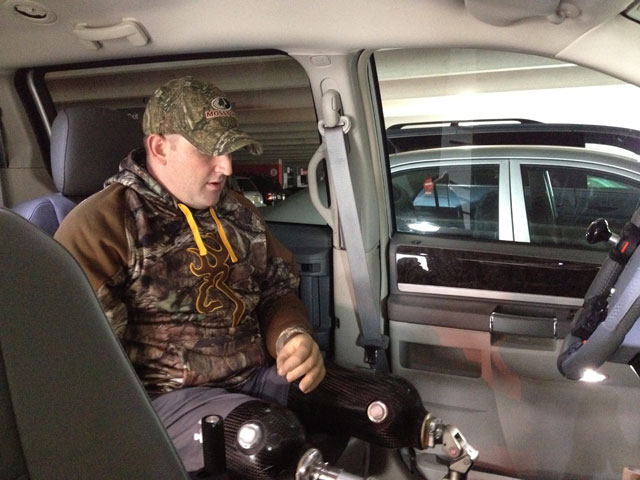
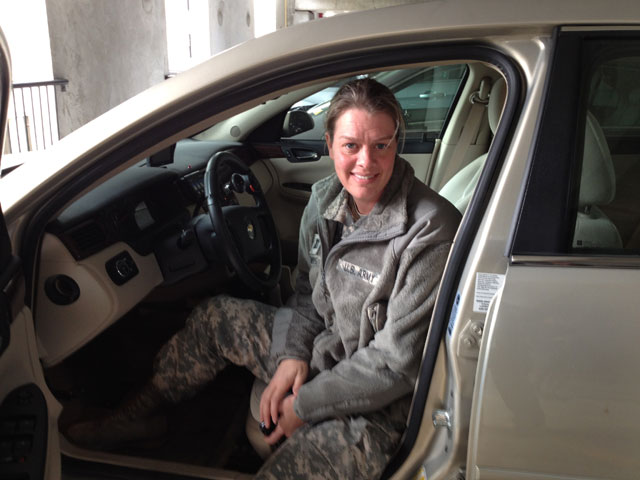
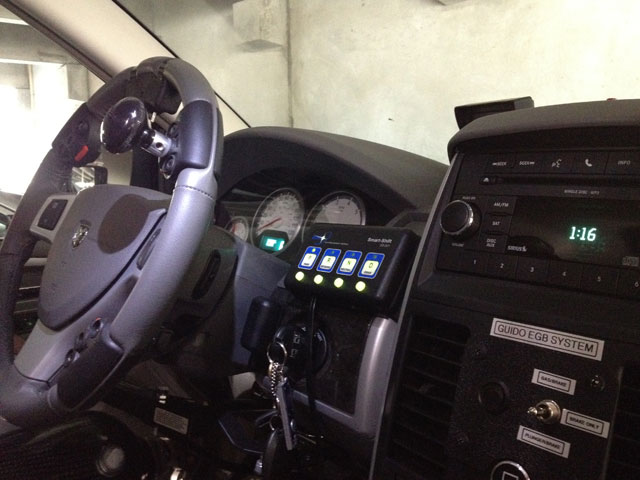
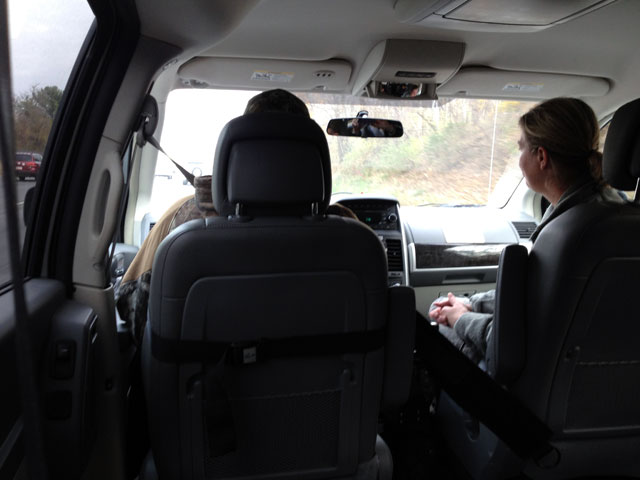

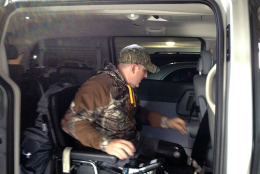
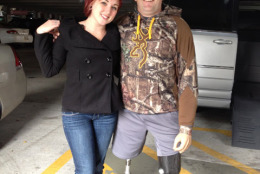
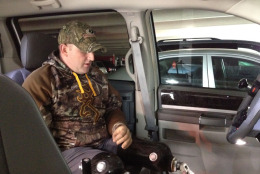
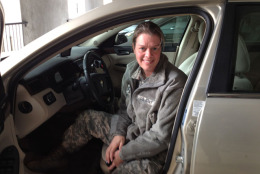
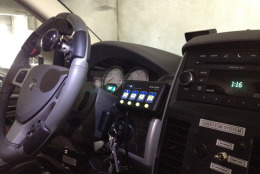
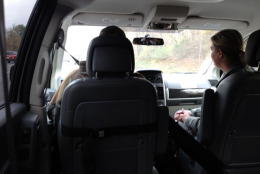
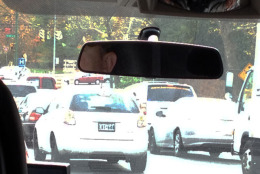
Darci Marchese, wtop.com
WASHINGTON – Tens of thousands of military service men and women have suffered catastrophic injuries in the wars in Iraq and Afghanistan. Coming home from the war often means months, if not years, of rehabilitation and being forced to learn how to do just about everything differently.
Eventually, that includes relearning how to drive.
That’s where Army Reserve Capt. Tammy Phipps comes in. Phipps is an occupational therapist and a certified driving rehab specialist. She has two deployments to Iraq under her belt.
Phipps was asked to start up the driving rehabilitation program at Walter Reed Army Medical Center in fall 2008. She continues the program at the Walter Reed National Military Medical Center in Bethesda.
It’s a unique program – the only comprehensive driving rehab program run by the Department of Defense. Phipps is very proud of what she is able to accomplish.
Getting a wounded service member behind the wheel is like giving them freedom, she says.
“It’s more than just freedom … it’s putting their lives back together,” Phipps says.
WTOP’s Darci Marchese sat down with Phipps in her Walter Reed office. She also met Sgt. Monte Bernardo, a triple amputee.
His amazing attitude and determination are putting him behind the wheel just four months after his catastrophic injuries.
“I’ve always been one to push above and beyond. I set my standards high and then I try to exceed them,” says Bernardo, with the 82nd Airborne Division out of Fort Bragg, N.C.
Bernardo, now 30, was on his second deployment to Afghanistan when his life drastically changed.
It was the Fourth of July when his unit was ambushed just south of Kandahar and he sat on a bomb.
“I lost my right leg above the knee. I got my left leg blown off and then I lost my left hand, right at the wrist,” he says matter-of-factly.
But his resolve is inspiring.
“I honestly don’t care that I lost all of this. I’d do it again in a heartbeat,” he says.
Bernardo was walking just 47 days after losing his legs.
“Apparently I’m pretty quick at recovering from what I hear from everybody,” he says. “I’m relearning how to use a hand that’s not mine, legs that aren’t mine, driving, fishing, hunting, I’ve done all of it.”
Watch a short video of triple amputee Sgt. Monte Bernardo, U.S. Army, 82nd Airborne Division, driving a modified van:
And Bernardo is not alone.
Phipps teaches a variety of service members how to drive again with physical, obvious wounds like amputations and the loss of an eye.
“But we also have a fair number of service members who have traumatic brain injuries and that can effect driving,” Phipps says.
Sometimes the barrier isn’t the physical wound but anxiety about getting behind the wheel again.
“They always have this anticipation of how weird it’s going to be and honestly the most satisfying piece of my job is really how normal (driving) is,” says Phipps.
Tools to re-teach wounded warriors how to drive
Phipps says the patient’s medical condition needs to be stabilized before he can learn how to drive.
The next step may begin with the clinical tools at her disposal. Many times she does vision screening, cognition testing and tests reaction time. Other times patients just hop in the car with her and go.
“I’m not teaching them how to drive, I’m showing them how to drive differently,” Phipps points out.
There are two modified vehicles at Walter Reed: a van and a sedan. Both were donated by the American Red Cross.
The type of injury usually dictates which vehicle is best for the patient. The vehicles are outfitted with state-of-the-art equipment such as hand controls that act as the gas pedal and brake.
Patients go out and drive with Phipps, who has her own controls in the passenger seat, in case she needs to take over.
She boasts her patients have never gotten into a major accident during their training or afterward.
Cruising the Beltway
Walter Reed in Bethesda is located right off the Beltway, and that’s where wounded service members get a feel for highway driving.
“You are going to be on the Beltway today with a triple amputee who’s driving for the third time,” Phipps jokes.
No problem.
Since Bernardo sometimes gets around in a wheelchair, he’s relearning to drive in the van. He wheels into the van in his wheelchair and pushes himself into the driver’s seat.
“There’s plenty of room under here for not having legs,” he jokes. He is wearing his prosthetic legs.
He shows off the hand controls, which are located on the left side of the car. He controls them with his prosthetic hand and has to get used to the right amount of torque to increase speed.
He steers with his right, “good” arm.
With just a few tips from Phipps, Bernardo pulls out of the tight parking spot in the Walter Reed garage without any problem.
He has a few passengers but doesn’t seem worried about the extra attention.
Along with Bernardo is his sister, 27-year-old Stella Shafer, who is watching her brother drive for the first time. She’s been at Walter Reed since the day her brother woke up in the hospital after the blast.
“It’s a little nerve-racking just cause it’s my first time being in the vehicle with him and it’s only day three for him. But it’s awesome. I think it’s really, really great that this is even an option for him,” Shafer says from the backseat.
Bernardo drives along Rockville Pike and then takes us onto the Beltway, where we encounter some drivers who cut him off. He handles it with ease.
It doesn’t take long before we hit our first traffic jam. The reason: a chair in the road. Bernardo and his sister joke we should stop to pick it up. The mood in the van is light.
While driving, Bernardo is asked how he feels and is told he’s doing great. “Yeah, it feels normal, pretty simple and easy,” he replies.
How does sister Stella feel? “It’s good. I’m so excited. It’s one more big, big step,” she says with pride.
After more than 30 minutes driving around down, Bernardo brings everyone safely back to Walter Reed without incident.
After the Drive
Everyone piles out of the van feeling great.
“Yeah, I mean it felt pretty normal – crazy traffic out there – but it felt natural, normal,” Bernardo says. He also calls D.C. drivers “stupid.”
But wasn’t he a bit nervous?
“I jumped out of airplanes for the last six years and I stepped on a bomb … phsshh, what’s to be nervous about?” he says with a laugh.
Phipps was also impressed, never reaching for her hand controls during the drive.
“Yeah, he’s excellent, excellent. I like being able to go out with very experienced drivers. It’s a little bit of an easier case,” she says. Phipps says she’ll drive with him a few more times.
Soon, Bernardo will have his 2005 Ford F-350 modified with his own hand controls.
Phipps says all injured service members qualify for a Veterans Affairs auto grant that allows them to modify their vehicles.
She says relearning how to drive is a paramount part of the recovery process.
She says it gives wounded service members with children the ability to continue their duties as a parent by picking up and dropping off their kids. It also allows service members to go back to school or even have the freedom to take their significant other to the movies.
Phipps has been in the military for 19 and a half years but can’t imagine retiring just yet.
There’s more work to be done.
Follow @DMarcheseWTOP and @WTOP on Twitter.
(Copyright 2012 by WTOP. All Rights Reserved.)






